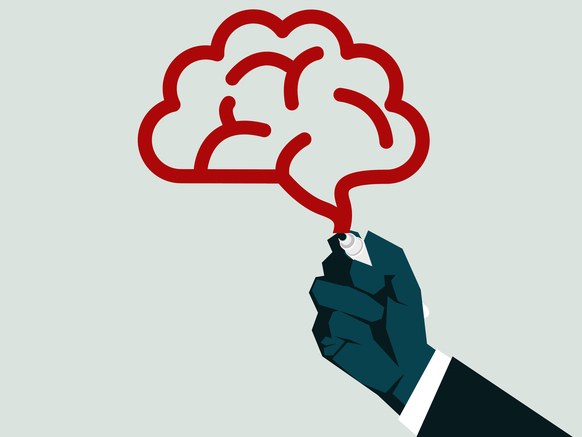The Cognitive Bias President Trump Understands Better Than You
MEDIA, 20 Feb 2017
Emily Dreyfuss | Wired – TRANSCEND Media Service
18 Feb 2017 – Americans born in the United States are more murderous than undocumented immigrants. Fighting words, I know. But why? After all, that’s just what the numbers say.
Still, be honest: you wouldn’t linger over a story with that headline. It’s “dog bites man.” It’s the norm. And norms aren’t news. Instead, you’ll see two dozen reporters flock to a single burning trash can during an Inauguration protest. The aberrant occurrence is the story you’ll read and the picture you’ll see. It’s news because it’s new.
The problem here is not just that this singling out creates a distorted, fish-eye lens version of what’s really happening. It’s that the human psyche is predisposed to take an aberration—what linguist George Lakoff has called the “salient exemplar”—and conflate it with the norm. This cognitive bias itself isn’t new. But in a media environment driven by clicks, where politicians can bypass journalistic filters entirely to deliver themselves straight to citizens, it’s newly exploitable.
You know who else isn’t as likely to commit murders in the US as native-born citizens? Refugees. Or immigrants from the seven countries singled out in President Trump’s shot-down travel ban. Or for that matter, immigrants at all. According to numerous studies, increased immigration correlates with lower violent crime rates in a community. Yet next week, Trump is promising a revised travel ban in the name of safety.
In the past, the president has also promised to publish a weekly list of crimes committed by undocumented immigrants. What he hasn’t promised to publish is a list of crimes committed by Americans. That’s not news. But his list is likely to create the false impression that undocumented immigrants are especially prone to commit violent crimes—an impression in which the human brain is complicit.
Taking Advantage of Bias
Lakoff, a University of California, Berkeley linguist and well-known Democratic activist, cites Ronald Reagan’s “welfare queen” as the signature “salient exemplar.” Reagan’s straw woman—a minority mother who uses her government money on fancy bling rather than on food for her family—became an effective rhetorical bludgeon to curb public assistance programs even though the vast majority of recipients didn’t abuse the system in that way. The image became iconic, even though it was the exception rather than the rule.
Psychologists call this bias the “availability heuristic,” an effect Trump has sought to exploit since the launch of his presidential campaign, when he referred to undocumented Mexican immigrants as rapists.
“It basically works the way memory works: you judge the frequency, the probability, of something based on how easily you can bring it to mind,” says Northeastern University psychologist John Coley. “Creating a vivid, salient image like that is a great way to make it memorable.”
This is the same bias that makes you fear swimming in the ocean lest you get attacked by a shark, despite shark attacks being far less common than, say, death by coconut. When something is memorable, it tends to be the thing you think of first, and then it has an outsize influence on your understanding of the world. After the movie Jaws came out, a generation of people was afraid to swim in the sea—not because shark attacks were more likely but because all those movie viewers could more readily imagine them. (Disclosure.)
Psychologists stress that your brain has to work this way, to a certain extent—otherwise you’d have a very hard time differentiating and prioritizing the avalanche of inputs you receive throughout your life. “It’s not a cognitive malfunction,” says Coley. “But it can be purposefully exploited.” When Trump uses a salient exemplar that will lodge in your brain, he’s manipulating your brain’s natural way of sorting information.
But if you can’t totally eliminate your brain’s predisposition, you can at least work against the potential for bias it creates by understanding that it exists. Journalists in particular need to be mindful because exploiters of this bias, such as the president, are taking advantage not just of the way the human brain works but the way journalism works. The daily news at its worst becomes a catalog of salacious salient exemplars that only serve to distort the reality journalism in its most ideal version aspires to reflect. “We haven’t done as good a job of actually explaining how things function at a higher level, the success stories,” says Ann Marie Lipinski, curator of the Nieman Foundation for Journalism at Harvard. This failing aided Trump during the campaign, Lipinski says. By focusing on negative stories, the news helped to paint a picture of an America in need of “being made great again.”
Recently, Trump told an audience of senior military commanders at CENTCOM that the “very, very dishonest media” didn’t report on terrorism. The implication was that journalists bury important news about terrorism because of some alternate agenda. Later that day, Trump spokesman Sean Spicer released a list of terrorist acts the president felt that journalists didn’t spend enough time covering. Journalists pounced: Hey, we reported on ALL OF THOSE! We won Pulitzers for our reporting! Here are a bazillion front page headlines proving it!
In doing so, journalists took the bait. The stories about their stories fed the narrative that terrorism is everywhere (it’s not). Instead, reporters need to get smarter about covering the non-aberrant, to show that commonplace does not equal mundane. It may not be rare, but it’s reality.
______________________________________
 Emily Dreyfuss is WIRED’s News and Opinion editor. She edits WIRED Security, Opinion, and morning news.
Emily Dreyfuss is WIRED’s News and Opinion editor. She edits WIRED Security, Opinion, and morning news.
DISCLAIMER: The statements, views and opinions expressed in pieces republished here are solely those of the authors and do not necessarily represent those of TMS. In accordance with title 17 U.S.C. section 107, this material is distributed without profit to those who have expressed a prior interest in receiving the included information for research and educational purposes. TMS has no affiliation whatsoever with the originator of this article nor is TMS endorsed or sponsored by the originator. “GO TO ORIGINAL” links are provided as a convenience to our readers and allow for verification of authenticity. However, as originating pages are often updated by their originating host sites, the versions posted may not match the versions our readers view when clicking the “GO TO ORIGINAL” links. This site contains copyrighted material the use of which has not always been specifically authorized by the copyright owner. We are making such material available in our efforts to advance understanding of environmental, political, human rights, economic, democracy, scientific, and social justice issues, etc. We believe this constitutes a ‘fair use’ of any such copyrighted material as provided for in section 107 of the US Copyright Law. In accordance with Title 17 U.S.C. Section 107, the material on this site is distributed without profit to those who have expressed a prior interest in receiving the included information for research and educational purposes. For more information go to: http://www.law.cornell.edu/uscode/17/107.shtml. If you wish to use copyrighted material from this site for purposes of your own that go beyond ‘fair use’, you must obtain permission from the copyright owner.
